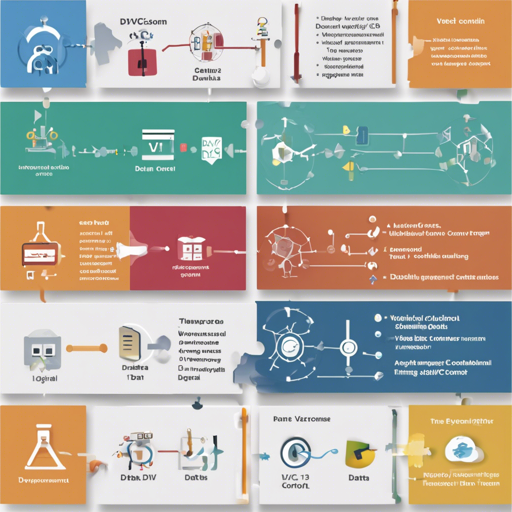Welcome to the world of Data Version Control (DVC)! If you often find yourself grappling with the complexity of managing and processing numerous files in your machine learning projects, then DVC is your new best friend. This powerful command line tool and Visual Studio Code extension brings an organized approach to data and model management. In this guide, we will outline how to use DVC effectively, along with troubleshooting tips to ensure smooth sailing on your AI journey.
What is DVC?
DVC stands for Data Version Control, and its primary purpose is to help you develop reproducible machine learning projects. Think of DVC as a GPS for your data—keeping track of every version, path, and transformation your data undergoes, ensuring that you never lose sight of where you’ve been or where you’re going.
Getting Started with DVC
To jump into DVC, follow these easy steps:
- Installation: Install DVC using your preferred method, such as pip, conda, or package managers like brew or choco.
pip install dvc # This command installs DVC via pip.git add train.py params.yaml
dvc add imagesdvc stage add -n featurize -d images -o features python featurize.py
dvc stage add -n train -d features -d train.py -o model.p -M metrics.json python train.pydvc exp run -n exp-baseline
vi train.py
dvc exp run -n exp-code-changeHow DVC Works
The magic of DVC lies in its ability to maintain a seamless user experience while managing significant amounts of data. Imagine you’re building a car with different components— DVC allows you to keep track of each component (like tires, engine, etc.) and easily swap them in and out as needed, without losing the whole vehicle!
DVC integrates with your version control (Git) to make sure that datasets, models, and code artifacts are all in sync. It provides a cache to store your data artifacts outside of Git while maintaining a reference in your repositories. This way, your projects remain lightweight, and you can switch between data versions effortlessly.
Visual Studio Code Integration
Want to use DVC from your favorite IDE? You can easily install the DVC extension for Visual Studio Code from the Marketplace. This extension offers features like experiment tracking and comprehensive data management, allowing you to visualize your projects effectively!
Troubleshooting Tips
If you encounter issues while using DVC, here are some troubleshooting tips to consider:
- Ensure that your DVC installation is correct and compatible with your operating system.
- If you face problems with commands, refer to the Command Reference for accurate syntax.
- Joining the community can help—visit forums and chats for additional support.
- If your data doesn’t load or sync properly, double-check your remote storage setup for any misconfigurations.
For more insights, updates, or to collaborate on AI development projects, stay connected with fxis.ai.
Conclusion
By adopting DVC, you are not just managing your data; you are paving the way for a robust and flexible machine learning pipeline, promoting reproducibility, and enhancing collaboration among teams. At fxis.ai, we believe that such advancements are crucial for the future of AI, as they enable more comprehensive and effective solutions. Our team is continually exploring new methodologies to push the envelope in artificial intelligence, ensuring that our clients benefit from the latest technological innovations.

